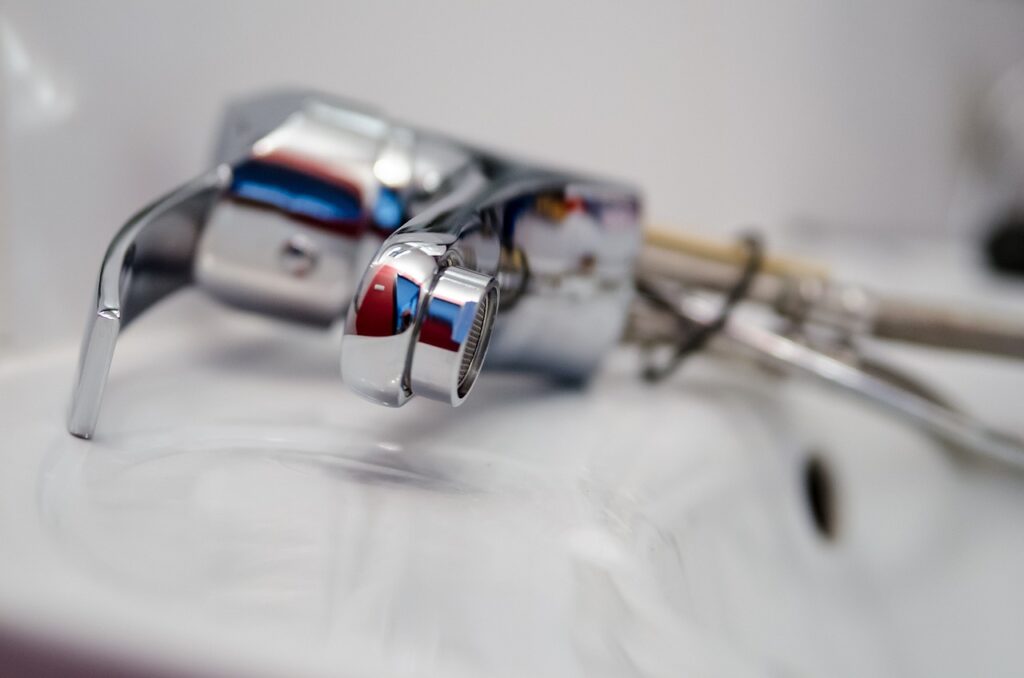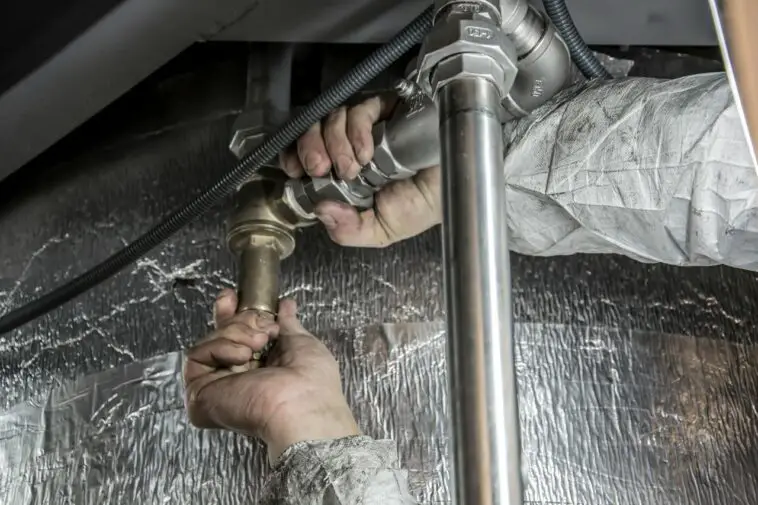Galvanized pipes have been used in homes in Edmonds WA for decades due to their durability and resistance to corrosion. However, over time, these pipes can become clogged with rust and mineral deposits, leading to reduced water flow and pressure. This can be a frustrating problem for homeowners, especially those living in older homes with galvanized plumbing systems. Fortunately, several methods for unclogging galvanized pipes can restore water flow and pressure to your home.
One effective method for unclogging galvanized pipes is using a chemical drain cleaner. These cleaners work by dissolving the buildup of rust and minerals, allowing water to flow freely through the pipes. However, it is important to use caution when using chemical drain cleaners, as they can be harmful if not used properly. It is recommended to wear gloves and eye protection and to follow the manufacturer’s instructions carefully.
It should also be noted that chemical drain cleaners can corrode your pipes, making things worse in the long run. You should try a solution that’s non-corrosive and safe for the environment before trying chemicals. Any professional plumber in Edmonds will attempt drain-clearing plumbing services before using chemicals. In fact, hydrojetting is preferred if the pipes aren’t too worn out and can handle the high water pressure.
Understanding Galvanized Pipes
History and Usage
Galvanized pipes were commonly used in older homes as a way to prevent rust and corrosion. The process of galvanization involves coating steel pipes with a layer of zinc to protect them from the elements. This method was first introduced in the early 1800s and quickly became popular due to its effectiveness and low cost.
Galvanized pipes were used for a variety of applications, including plumbing, gas lines, and heating systems. However, as newer materials became available, galvanized pipes fell out of favor due to their tendency to clog and corrode over time.
Common Issues with Aging Pipes
One of the most common issues with galvanized pipes in older homes is clogging. Over time, the zinc coating on the pipes can wear away, allowing mineral deposits to build up inside the pipes. This can lead to reduced water pressure and eventually a complete blockage.
Another issue with aging galvanized pipes is corrosion. As the pipes age, they can become more brittle and prone to developing leaks. Corrosion can also cause the pipes to weaken and eventually fail, leading to costly repairs.
To prevent these issues, it is important to regularly inspect and maintain galvanized pipes in older homes. This can include flushing the pipes to remove mineral buildup, replacing damaged sections of pipe, and upgrading to newer materials where necessary. By taking these steps, homeowners can ensure that their plumbing and heating systems remain in good working order for years to come.
Preparation for Unclogging
Tools and Materials
Before beginning the process of unclogging galvanized pipes in older homes, it is important to gather all the necessary tools and materials. Here are some of the tools and materials that will be needed:
- Plunger: A plunger is an essential tool for unclogging any type of drain, including galvanized pipes. It creates pressure that can dislodge clogs.
- Drain Snake: A drain snake is a long, flexible tool that can reach deep into pipes to break up and remove clogs.
- Bucket: A bucket is needed to catch any water that may spill out of the pipes.
- Rubber Gloves: Rubber gloves protect the hands from any harmful chemicals or bacteria that may be present in the pipes.
- Safety Glasses: Safety glasses protect the eyes from any debris that may fly out of the pipes during the unclogging process.
- Vinegar: Vinegar is a natural cleaner that can help dissolve clogs in galvanized pipes.
- Baking Soda: Baking soda is another natural cleaner that can help dissolve clogs in galvanized pipes.

Safety Precautions
Unclogging galvanized pipes can be a messy and potentially dangerous process. Here are some safety precautions that should be taken:
- Wear protective clothing: Protective clothing, such as rubber gloves and safety glasses, should be worn to protect the skin and eyes from any harmful chemicals or bacteria that may be present in the pipes.
- Turn off the water supply: Before beginning the unclogging process, turn off the water supply to the affected area to prevent any water from flowing out of the pipes.
- Use caution with chemicals: If using chemicals to unclog the pipes, follow the instructions on the label carefully and use them in a well-ventilated area.
- Use caution with tools: Drain snakes and other tools can cause injury if not used properly. Follow the instructions carefully and use caution when handling them.
By following these preparation steps and taking safety precautions, the process of unclogging galvanized pipes in older homes can be done safely and effectively.
Unclogging Techniques
Galvanized pipes in older homes are prone to clogging due to the accumulation of rust and mineral deposits. Here are some effective unclogging techniques to consider:
Mechanical Methods
Using mechanical methods is a simple and cost-effective way to unclog galvanized pipes. Here are some mechanical methods to consider:
- Plungers: Plungers are a common tool used to unclog pipes. They work by creating suction to dislodge blockages. A plunger can be used to unclog a galvanized pipe by creating suction on the affected area.
- Drain Snakes: Drain snakes are flexible cables that can be inserted into pipes to break up clogs. They work by rotating the cable to break up the blockage. A drain snake can be used to unclog a galvanized pipe by inserting the cable into the affected area and rotating it.
Chemical Solutions
Chemical solutions can be used to dissolve clogs in galvanized pipes. However, it is important to use caution when handling chemicals. Here are some chemical solutions to consider:
- Hydrochloric Acid: Hydrochloric acid can be used to dissolve mineral deposits in galvanized pipes. It is important to use caution when handling hydrochloric acid as it can be dangerous to handle.
- Sodium Hydroxide: Sodium hydroxide can be used to dissolve organic matter in galvanized pipes. It is important to use caution when handling sodium hydroxide as it can be dangerous to handle.
Professional Assistance
If mechanical and chemical methods fail to unclog the galvanized pipes, it may be time to seek professional assistance. Here are some professionals to consider:
- Plumbers: Plumbers are trained professionals who can diagnose and fix galvanized pipe clogs. They have the necessary tools and experience to unclog galvanized pipes.
- Drain Cleaning Services: Drain cleaning services specialize in unclogging pipes. They have the necessary tools and experience to unclog galvanized pipes.
Frequently Asked Questions
What is the safest method to clear a clog in galvanized piping?
The safest method to clear a clog in galvanized piping is to use a plunger or a plumbing snake. Chemical drain cleaners can cause damage to the pipes and should be avoided if possible.
How can one effectively remove rust buildup from galvanized pipes?
To remove rust buildup from galvanized pipes, a wire brush or sandpaper can be used to scrub the affected area. If the rust is extensive, it may be necessary to replace the affected section of the pipe.
What precautions should be taken when using chemical drain cleaners in galvanized plumbing?
When using chemical drain cleaners in galvanized plumbing, it is important to follow the manufacturer’s instructions carefully. Protective gear, such as gloves and goggles, should be worn to avoid skin and eye irritation. It is also important to avoid mixing different types of chemical drain cleaners, as this can produce harmful fumes.
Can a plumbing snake be used on galvanized pipes without causing damage?
Yes, a plumbing snake can be used on galvanized pipes without causing damage. However, it is important to use the snake carefully and avoid applying too much pressure, as this can cause the pipe to become damaged.
What are the common signs that indicate a galvanized pipe is clogged?
Common signs that indicate a galvanized pipe is clogged include slow draining water, gurgling sounds coming from the pipes, and foul odors emanating from the drain.
What long-term solutions exist for dealing with corrosion in galvanized pipes?
Long-term solutions for dealing with corrosion in galvanized pipes include replacing the affected sections of the pipe with newer, non-corrosive materials such as copper or PVC. Alternatively, a protective coating can be applied to the interior of the pipe to prevent further corrosion.




